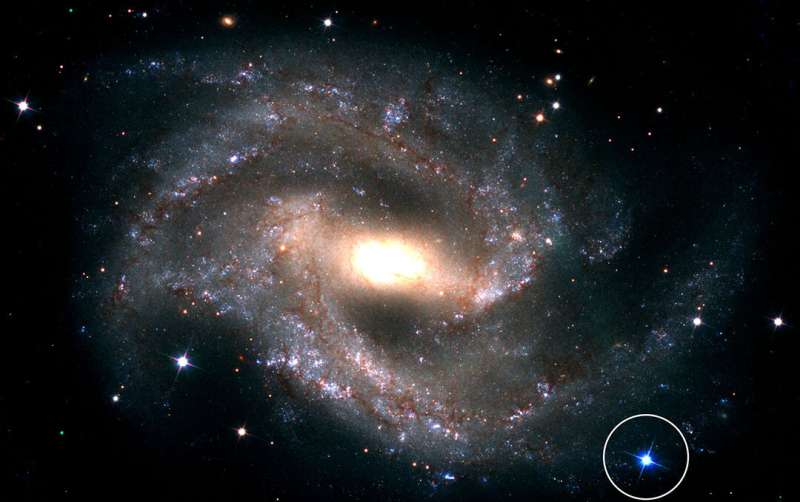Scientists observe year-long plateaus in decline of Type Ia supernova light curves

Scientists at the Center for Astrophysics, Harvard & Smithsonian have announced the discovery that, contrary to previously accepted knowledge, Type Ia supernovae experience light curve decline plateaus, and lengthy ones at that, lasting up to a year.
CfA scientist Or Graur first noticed strange light curve behaviors while studying late-time Type Ia supernovae in 2015, and this year confirmed light curve plateaus in Type Ia supernovae. "Most supernova research is conducted in the weeks or months immediately following an explosion, but we wanted to see how light curves behave at late times, around 500 to 1000 days after explosion," said Graur. "Optical observations of SN2012gc in 2015 revealed a slowdown in the light curve as expected, but as we studied additional supernovae over time, it became apparent that other mechanisms were at play, so we started looking for patterns to explain what was going on."
To better understand the strange behavior, Graur teamed up with Adam Riess of The Johns Hopkins University and the Space Telescope Science Institute, and 2011 winner of the Nobel Prize in Physics, to study nearby supernovae using Riess's already-set HST programs. "Even though these were all nearby supernovae, at these late times they were very faint. We needed Hubble's resolving power to be able to tell them apart from other stars in their respective galaxies," said Graur. "But what made the difference to our observations was that Adam's programs on Hubble also had near-infrared data in the H-band. What started as a fishing expedition revealed a portion of time where the light curve is flat, and that period lasts for up to a year. That was a surprise. I didn't expect to see that."
The idea of supernova light curve plateaus is not new to cosmology. Type IIP supernovae, which are born of the collapse and explosion of hydrogen-rich red super giants, commonly experience light curve plateaus roughly 100 days in length. Until the discovery of the Type Ia supernova light curve plateau, 100 days was considered a long-period plateau. Type Ia supernova light curve plateaus begin at between 150 and 500 days after explosion, and last approximately 350 days, or nearly a year.
"Up until this moment, the only plateaus seen in any type of supernova were in Type IIP, and they were relatively short compared to what we're seeing in our observations. This is only the second time we've ever seen a plateau like this in a supernova," said Graur. "What we're seeing is in stark contrast to what we've always believed about Type Ia supernovae and it's going to impact the way we apply Type Ia light curves to cosmological models in the future."
The results of the study are published in Nature Astronomy. In addition to Graur—who also serves as a Research Associate at the American Museum of Natural History—and Riess, the study involved CfA scientist Arturo Avelino along with scientists Kate Maguire, Trinity College Dublin; Russell Ryan, Space Telescope Science Institute; Matt Nicholl, University of Edinburgh; Luke Shingles, Queens University Belfast; Ivo R. Seitenzahl, University of New South Wales Canberra; and, Robert Fisher, University of Massachusetts Dartmouth.
More information: A year-long plateau in the late-time near-infrared light curves of type Ia supernovae. Nature Astronomy 2019 DOI: 10.1038/s41550-019-0901-1 , nature.com/articles/s41550-019-0901-1
Journal information: Nature Astronomy
Provided by Harvard-Smithsonian Center for Astrophysics




















